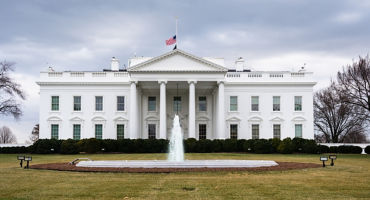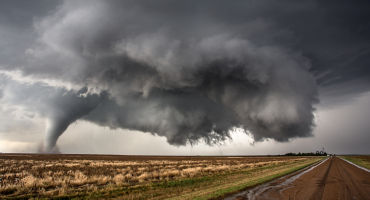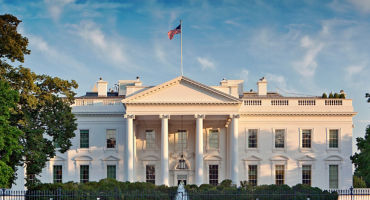- Geopolitical Strategist
Skip to main content
- Funds
- Insights
- Capabilities
- About Us
- My Account
United States, Institutional
Changechevron_rightThank you for your registration
You will shortly receive an email with your unique link to our preference center.
The views expressed are those of the author at the time of writing. Other teams may hold different views and make different investment decisions. The value of your investment may become worth more or less than at the time of original investment. While any third-party data used is considered reliable, its accuracy is not guaranteed. For professional, institutional or accredited investors only.
The 2024 US presidential election has been scrambled by a series of “black swan” political events in recent weeks. So, too, has an already complex, dangerous, and unpredictable geopolitical outlook — not only by the vagaries of US domestic politics, but also and primarily by a series of geopolitical crises around the world that either a Harris administration or a Trump 2.0 team would have to manage immediately upon taking the oath of office next January.
Here’s a brief look at how either administration would likely address these challenges, and the potential impacts on geopolitical stability, US national security policy, and the markets.
Vice President Kamala Harris has assumed a significant foreign policy role in the Biden administration, meeting with more than 150 global leaders, traveling to 21 countries, and representing the United States at a variety of multilateral events and organizations, including three Munich Security Conferences. She has also attended most meetings of the US National Security Council, and importantly, has been a regular attendee of the President’s Daily Brief meeting, which lays out the key US national security issues of the day and is prepared by the nation’s top intelligence analysts.
In almost every area, the vice president’s foreign policy positions hew closely to President Biden. So, regarding a potential Harris administration foreign policy, we should expect “more of the same” and a continuity of approach and personnel.
This means a continuing focus on strategic sector protection and promotion in industries critical to great-power competition with China, including AI, quantum, biotech, and others (Vice President Harris, in particular, has been a proponent of US export controls and outbound investment restrictions on advanced semiconductors).
It also means a continuing focus on deepening relationships with US allies in both economic and national security areas, including ongoing US support for Ukraine and Taiwan, and increasing reliance on NATO, the Quad, AUKUS, and other traditional and emerging multilateral institutions.
Lastly, it means a deepening focus on climate change, and in particular, the national security aspects likely to accelerate over her administration such as climate migration, rising extremism, and other emerging challenges across equatorial and tropical regions, where climate change is hitting hardest and where many of the current geopolitical hotspots sit.
The one foreign policy area where Vice President Harris seems to differ, at least somewhat and in tone, from the Biden administration is on Gaza, where she has been more vocal in her concerns regarding the plight of the Palestinians (calling the current conflict a “humanitarian catastrophe”), while also offering strong support for Israel.
Vice President Harris’s choice of running mate, too, offers a potential differentiating factor in US-China relations. Minnesota Governor Tim Walz has a strong personal connection with China, including a yearlong teaching stint in Guangdong in 1989 and has visited China more than 30 times. This cultural fluency and perspective may offer additional opportunities for US-China engagement at senior government levels, though Walz’s criticism of the Chinese Communist Party while a member of Congress — particularly on human rights, Tibet, and Hong Kong — may mitigate this.
My deep dive of the foreign policy implications of a Trump 2.0 administration can be found here.
In brief, I would expect a more transactional US foreign policy, similar to what we saw during President Donald Trump’s first administration, particularly regarding Ukraine and Russia, and including Taiwan.
Using his first administration as a guide, I’d also expect a more hawkish approach toward Iran given the cancellation of the Iran nuclear deal in 2018, and the US assassination of Iran’s top military and intelligence commander Maj. Gen. Qassim Suleimani in 2020.
Trade, too, would likely shape US foreign policy in a second Trump administration. The former president’s promise to levy significant trade tariffs on China — as well as on some US allies across Europe and the Indo-Pacific — would likely be a key feature of a Trump 2.0’s approach to the world and one almost certain to add new tensions to both US-China relations, as well as new frictions with traditional US allies.
Regardless of November’s result and the differing policy priorities of Vice President Harris and former President Trump, the global geopolitical environment will remain challenged — likely for years to come. In such an uncertain national security environment, US leaders and other policymakers across the world will continue to emphasize national security, often at the expense of economic efficiency.
Investors should therefore be preparing for a very different backdrop from previous eras, including selective protectionism as a new normal, a rising probability of structurally higher inflation and interest rates, more differentiated macro cycles, and lower global growth than we saw during the “goldilocks” period of globalization.
On the positive side, these geopolitical and policy disruptions are likely to create a variety of differentiated market outcomes at the regional, country, industry, company, and asset-class levels, offering plenty of opportunities to find winners and losers across actively managed investment strategies.
Last but not least, these structural shifts will also likely produce long-term tailwinds for several national security-related investment themes. They include — but are certainly not limited to — legacy defense and defense innovation, as well as climate resilience and renewable energy, given the close relationship between climate change and rising geopolitical instability.
Expert

A pivotal election result for Germany and Europe
Continue readingSitting in the slack tide of US fiscal stimulus
Continue readingThe US immigration crackdown: Weighing the economic implications
Continue readingGeopolitics in 2025: Risks, opportunities, and deepening uncertainties
Continue readingBy
What an “America first” foreign policy may mean for markets
Continue readingBy
Venture capital outlook for 2025: 5 key trends
Continue readingMultiple authors
What's current in credit: November 2024
Continue readingURL References
Related Insights
Stay up to date with the latest market insights and our point of view.
Thank you for your registration
You will shortly receive an email with your unique link to our preference center

A pivotal election result for Germany and Europe
Macro Strategists Eoin O’Callaghan and Nicolas Wylenzek share their initial observations on what the pivotal Federal election results in Germany could mean for investors.

Sitting in the slack tide of US fiscal stimulus
Portfolio Manager Connor Fitzgerald profiles the risks of the Trump administration's policies around spending cut, tariffs, and immigration, and analyzes potential effects on US growth.

The US immigration crackdown: Weighing the economic implications
As the details of new US immigration policies come into focus, Macro Strategist Juhi Dhawan considers the risks they may pose for the labor market and the broader economy.

Geopolitics in 2025: Risks, opportunities, and deepening uncertainties
Geopolitical Strategist Thomas Mucha outlines his structural, policy, and geopolitical outlook for the year.
By

What an “America first” foreign policy may mean for markets
Fixed Income Portfolio Manager Brij Khurana explores the potential market impacts of President Trump's "America first" foreign policy. From regional hegemony to global economic dominance to tariffs applied for strategic geopolitical gain, discover how these shifts could affect investors.
By

Venture capital outlook for 2025: 5 key trends
Our venture capital experts are encouraged by the healthier environment for venture capital in 2025. In this year's outlook, they explore key themes for the year ahead, including: higher deployment, AI, rebounding IPOs, and impacts of the 2024 election.
Multiple authors

What's current in credit: November 2024
Connor Fitzgerald explores the impact of President Trump’s US election victory on credit markets. Where are the opportunities and risks for credit investors now?

Chart in Focus: Is the “Trump trade” real?
Is this "Trump trade" real?In this latest edition of Chart in Focus, we compare market's reactions to Trump's re-election and his 2016 election, and share our observations.
Multiple authors

Fed stays its course while acknowledging brewing winds of change
Our expert examines the underlying data which drove the Fed to stay its rate-cutting course.

Trump 2.0: US election market impacts
In the wake of the US election, macro strategists Juhi Dhawan and Michael Medeiros join host Thomas Mucha to discuss the market, policy, and geopolitical implications of Trump 2.0.
URL References
Related Insights
© Copyright 2025 Wellington Management Company LLP. All rights reserved. WELLINGTON MANAGEMENT ® is a registered service mark of Wellington Group Holdings LLP. For institutional or professional investors only.
Enjoying this content?
Get similar insights delivered straight to your inbox. Simply choose what you’re interested in and we’ll bring you our best research and market perspectives.
Thank you for joining our email preference center.
You’ll soon receive an email with a link to access and update your preferences.
Markets in 2025: asleep at the wheel or in the driving seat?
Watch the conversation with Head of Macro Strategy John Butler as he discusses recent macro events and potential 2025 market outcomes for investors.
By